
|
In this Beginners Guide PCSTATS aims to give you a
basic visual acquaintance with the various ports and connectors on your PC, and a general understanding of what they are and how they work, hopefully bridging a circuit between the jargon and your hands-on knowledge of your own computer.
|
|
|
|
Home >
Reviews >
Beginners Guides >
Beginners Guide |
|
|
Motherboad connectors continued.
Motherboard Connectors: Depending
on the model, a motherboard will have several different internal connectors to
enable extra features. Some, such as the case connectors for attaching the leads
from the case power and reset switches, the power and hard drive LEDs, and the
internal speaker, will be present on every board. Others vary from model to
model. Some examples are: Connectors for extra USB ports, internal audio
connectors for boards with integrated sound, wake-on LAN connectors, etc.
Consult your manual for a list of your board's features.
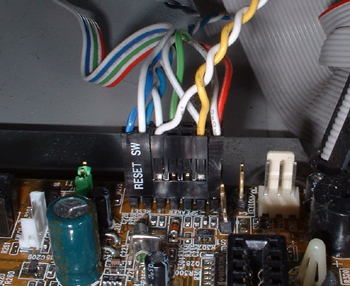
Memory (RAM) Slots: These hold
the main memory of the computer. The amount of available slots Depends on the
board, but it's usually 2-4. When upgrading your computer's memory, additional
RAM (Random Access Memory) chips can be plugged in here. They are keyed so that
the memory chips can only fit one way.
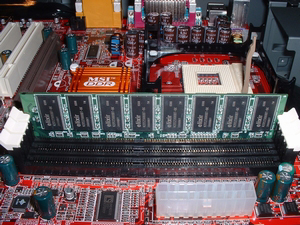
motherboard power connector(s):
The ATX power connector is present on all ATX motherboards, obviously. motherboards
compatible with Intel Pentium 4 processors will have two extra power connectors
for a 4-pin square and a 6-pin flat plug respectively. For obvious reasons, the
computer should be (hmm, will be) powered off, and ideally the power supply
unplugged when you connect or disconnect these.
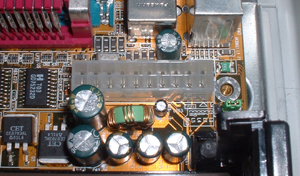
motherboard IDE ports: These
two internal ports allow the attachment of hard drives and CD-ROM drives, as well
as certain other internal devices like ZIP drives. They should be marked as
primary or secondary, otherwise consult your manual. Each port can support up to
two devices on a single cable. Some motherboards may have more than two IDE ports.
The computer must be powered off to attach or remove devices from these
ports.
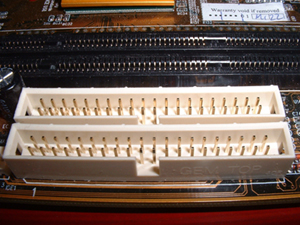
motherboard floppy drive connector:
This single port allows the connection of up to two floppy drives on
a single cable. The computer must be powered off to attach or remove drives from
this port. There's not much more to say about it.
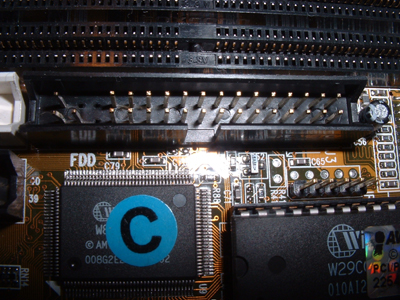
Hopefully the pictures and the
accompanying descriptions in this Beginners Guide have familiarized you with the basic
ports and connectors in your average home computer. The learning process for
computer hardware is pretty straightforward, and once you learn to transform the
technical terms into something that makes sense internally, you are well on your
way.
If you have any comments or questions, please post them in the PCSTATS Forums. Find out about this
and many other reviews by joining the Weekly PCSTATS.com Newsletter today!
Catch all of PCSTATS latest hardware reviews right here.
|
